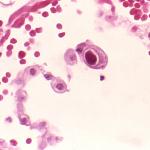Several years ago, a brand new method of genetic engineering called CRISPR was invented, and it was based on discoveries made about the rudimentary "immune system" possessed by bacteria.
gene drive
New genetic technology can either come to fruition and have a positive impact on our lives or be driven into the ground.
It is rare that a scientist discovers a completely novel technique or method. When it happens, and that technique is useful, it is revolutionary.





